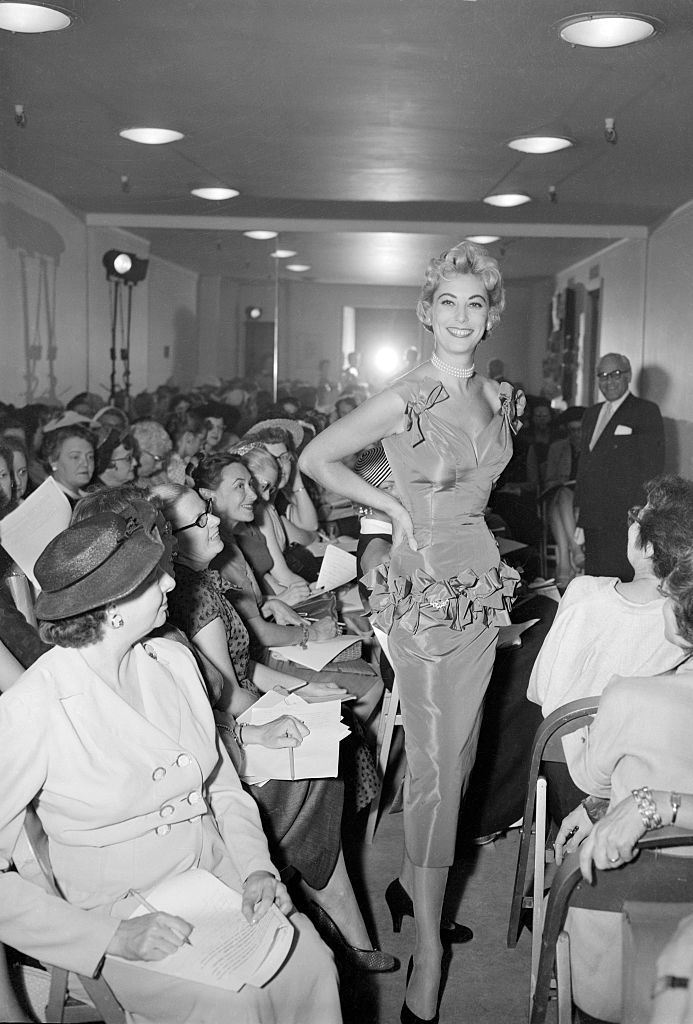Story LIEU CHUONG
Photos INTERNET
As one of the four global capitals of fashion, New York carries a distinctive energy. Here, even dream can become a reality if you take risks and break through with your unique version.

From Lower East Side to Garment District
The fashion industry took a leap forward in New York in the late 1880s, when the United States welcomed millions of Jewish immigrants from Eastern Europe. During this time, ready-made fashion was in demand, leading to a heightened need for labor in the garment industry. Consequently, numerous tightly packed and stifling garment factories were born in the Lower East Side, burdened by overcrowding and inadequate living conditions.
After multiple relocations, these factories moved to The Tenderloin – a then “fringe society” area of Manhattan along Seventh Avenue. This neighborhood was infamous for its brothels, gambling dens and murky taverns. However, it presented a lucrative opportunity for the factory owners who had to pay only a nominal rent. Thus, the Garment District was born in the 1920s and quickly became one of the leading centers for garment production worldwide. By 1960, 75% of women’s and children’s fashion in the United States were concentrated and produced in the Garment District.
With an extremely advantageous location for accessing potential customers – right in the heart of Manhattan – Seventh Avenue attracted numerous fashion brands. Notably, famous designers such as Ralph Lauren, Calvin Klein, Donna Karan and Oscar de la Renta took their first steps from this bustling fashion boulevard. Built by the hands of struggling immigrants, the Garment District and Manhattan evolved to become a pivotal foundation that facilitated New York’s transformation into one of the most vibrant fashion capitals in the world.

A trenchant assertion
Before the 1940s, Paris was virtually the sole center for all significant international fashion activities. Charles Frederick Worth, the father of Haute Couture, paved the way for the world’s first fashion shows when he decided to organize “salon shows” biennially and only invite familiar guests. This type of show quickly spread to the United States and expanded to a more grandiose scale, with a stronger emphasis on performance and artistic quality.
Entering the 1940s, Paris gradually lost its exclusive status in fashion as France entered World War II. Faced with instability in Europe, the United States inadvertently found an opportune moment to rise as the new fashion capital of the world, and it achieved this through a historic initiative by the renowned journalist Eleanor Lambert: organizing a press week for fashion brands.
The first week in 1943 was simply a series of press conferences announcing newly launched collections, with buyers having to make appointments and visit the exhibition rooms personally. From this point, many of New York’s fashion talents began to garner attention and recognition on the pages of prestigious magazines. Gradually, with the advent of the “Fashion Calendar” – a show schedule mechanism created by Ruth Finley to ensure brands did not overlap in show times, more and more brands participated. As fashion styles diversified, the need to search for and create appropriate settings for shows became more crucial, and each brand secured its unique venue for the organization.
In 1962, Lambert founded the Council of Fashion Designers of America (CFDA), officially unifying the fashion community into a well- structured and influential organization. After enduring various changes, by the 1990s Fashion Week underwent alterations in its organizational approach, bringing all brands together at a single location as seen today. The annual show schedule was shifted from November to September and this period saw several milestones in New York and American fashion: Marc Jacobs’ controversial grunge-style show for Perry Ellis in 1993; Kate Moss’s first catwalk appearance with Calvin Klein in 1993; Helmut Lang’s official Manhattan debut in 1998; and Alexander McQueen’s stormy inaugural runway at the Week in 1999. It was also during New York Fashion Week that we started to see the emergence of entertainment stars sitting in the front rows, including Julia Roberts, Leonardo DiCaprio, Drew Barrymore and Mariah Carey. To this day, New York Fashion Week continues to be one of the four most anticipated fashion weeks worldwide, distinguished by its embodiment of creative freedom, avant-garde styles and relentless innovation.
Not only serving as a stage for high-end fashion runways, New York is also a vibrant cradle for street styles and youth culture such as hip hop, sportswear, grunge, hippie and Y2K. Every shift in style in this city can potentially set the precedent for global trends for a long time. With its youthful energy and continuous renewal, New York is an indispensable and boundless source of inspiration for the future of fashion, turning unique ideas into iconic fashion works through each era.










